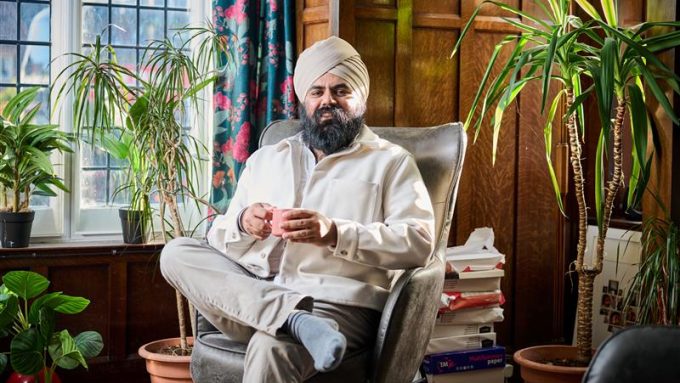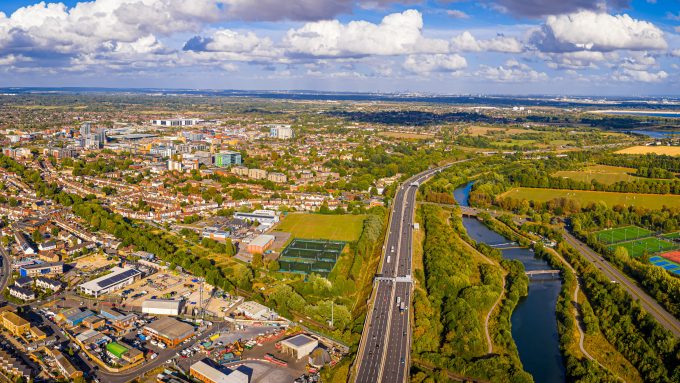
Green construction plans charge ahead for Lower Thames Crossing
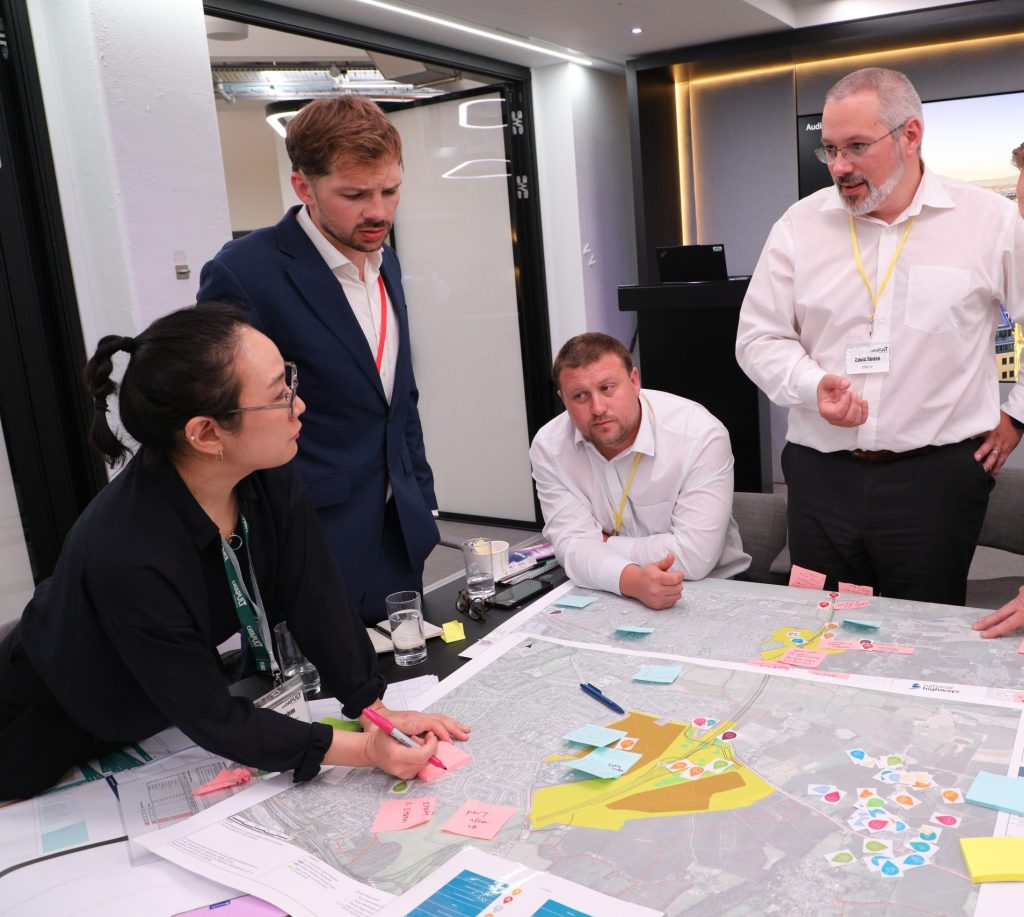
“We are here to push boundaries, find solutions and change the industry,” remarked the Lower Thames Crossing’s programme director Shaun Pidcock to a packed auditorium of SMEs and major contractors; shortly before they rolled up their sleeves to workshop ideas in groups.
Participants were gathered to take part in an ‘Energy & Infrastructure Sprint’ hosted by Connected Places Catapult and supported by National Highways, to discuss how best to provide charging to support electric and hydrogen powered machinery on site.
Construction of the 14.3 mile road link between Essex and Kent is divided into three work packages: roads north, the tunnel beneath the Thames, and roads south – each with their own challenges to overcome to ensure a plentiful supply of power to vehicles and plant.
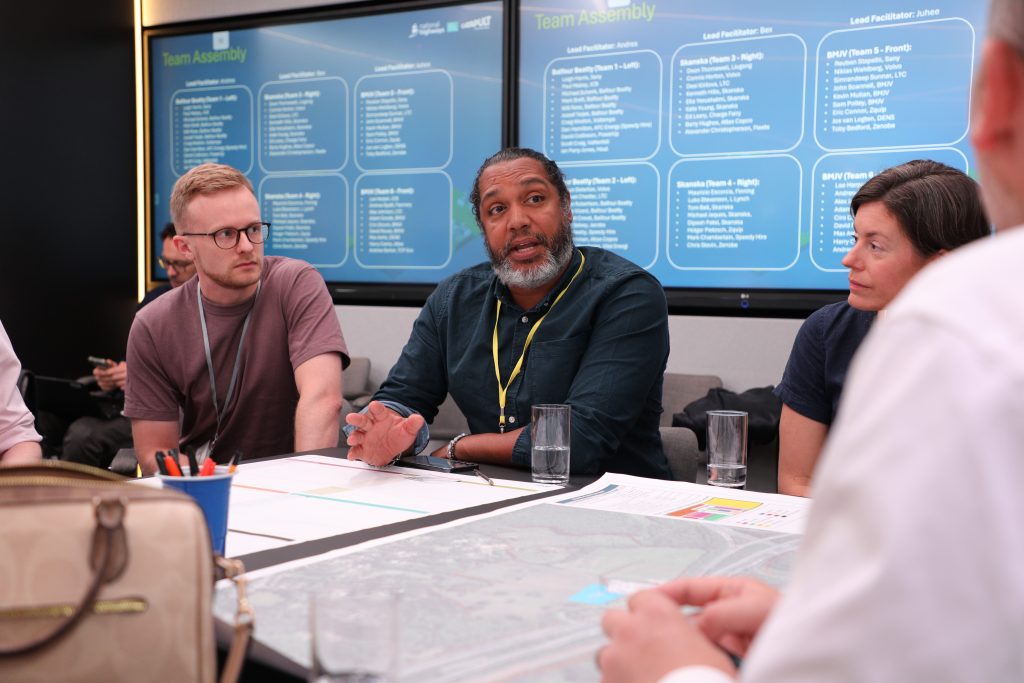
“Moving to zero emissions shouldn’t impact our productivity; if we plan it and do it right, we can improve everything we do,” added Shaun.
“We have got to change how we think about what we normally do, and as an industry we desperately need innovation.”Shaun Pidcock, programme director, Lower Thames Crossing
He pointed out that companies in the room have an opportunity not only to help make the Lower Thames Crossing a success, but “define the future of engineering and infrastructure building in the UK”.
He urged engineers in the room to “channel their inner Telford, Brunel, or Smeaton. What you are doing today is putting thought and planning into place, and will help drive success on the Lower Thames Crossing.”
Innovation as an enabler for change
Shaun was followed on stage by Sameer Savani, the Managing Director for Transport at Connected Places Catapult who said the industry will not achieve net zero with just incremental change. “It will take bold thinking, brave decisions, an appetite for risk and a willingness to break from the norm,” he said.
The answer is to innovate, Sameer added. “What has brought us here is not how we are going to get to where we want to be.” But he pointed out that innovation itself isn’t the goal.
“We see innovation as an enabler to achieve ambitious outcomes; as a lever to pull.”Sameer Savani, the Managing Director for Transport at Connected Places Catapult
Highways professionals may not always define themselves as innovators, “but are problem solvers, risk takers and opportunity exploiters”. Innovation can be a fuel, he added, to enable that to happen.
“Let’s be the team that shows the rest of UK, the industry and the world what is possible when we bring courage and creativity,” Sameer added. “This is our chance to lead. We are not just addressing one challenge but building a supply chain that can win huge global opportunities.”
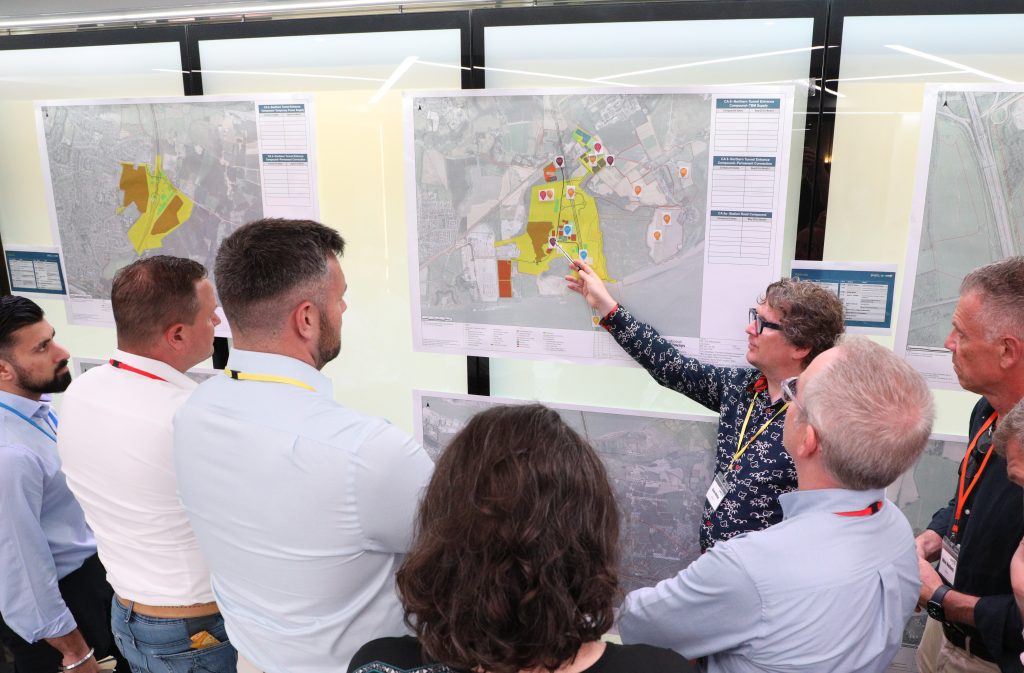
Delivery teams delve into detail
Three senior project representatives from the trio of Delivery Partners on Lower Thames Crossing then outlined the challenge from the perspective of their respective sites.
Michael Schenk from Balfour Beatty, John Scannell of the Bouygues-Murphy joint venture and Dipesh Patel from Skanska all enthusiastically embraced the challenges that lay ahead as they discussed each of their zero emission ambitions.
According to National Highways, the Lower Thames Crossing has set a carbon limit which represents a 50% reduction in carbon emissions. The project has now set itself an ambitious new target to cut its emissions by around 70% against its original prediction. As part of this, the project seeks to eliminate fossil and biofuels from its construction sites by 2027.
Large groups made up of Delivery Partners and SMEs then workshopped to address the question: ‘What is the most efficient charging combination to power-up zero emissions machinery on site, considering both off grid and on grid scenarios?’ Representatives from each group then presented their findings to the room and agreed that careful thought will be needed to decide on how best to upgrade power output for multiple sites across the project. As one participant put it: “No one size fits all.”
Neesha Pandya, Head of Carbon Delivery at the Lower Thames Crossing said it was inspiring to see the power of open innovation and collaboration - where construction partners were brough together with renewable energy specialists and equipment suppliers to create real solutions for electrifying sites.
Find out more about Lower Thames Crossing.
Find out more about how we support innovation in transport.


